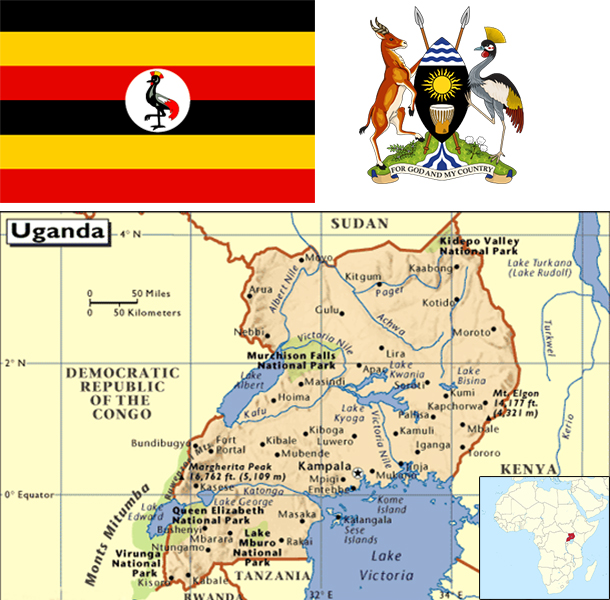Facts About : Uganda

Facts About Uganda - Your entry point into Uganda
1. History
Uganda gained independence from British colonial rule on October 9, 1962. The country has experienced a complex political history, including the infamous rule of Idi Amin (1971–1979). Since the mid-1980s, Uganda has seen relative stability under President Yoweri Museveni.
2. Geography
Located in East Africa, Uganda is a landlocked country bordered by Kenya, South Sudan, the Democratic Republic of Congo, Rwanda, and Tanzania. It lies on the equator and includes the northern shores of Lake Victoria, Africa’s largest lake.
3. People and Society
Uganda has a population of over 45 million. It is one of the youngest populations in the world, with a median age of about 16 years. The society is largely rural, but urbanization is increasing. The official languages are English and Swahili, though Luganda is widely spoken.
4. Tribes
Uganda is home to over 50 ethnic groups. Major tribes include:
- Baganda – Central region, largest ethnic group.
- Banyankole – Western Uganda.
- Basoga – Eastern Uganda.
- Acholi – Northern Uganda.
- Bagisu – Eastern highlands, known for traditional circumcision rituals (Imbalu).
5. Government
Uganda is a presidential republic with a multi-party political system. The President is both the Head of State and Government. The country has a unicameral parliament.
6. Economy
Uganda’s economy is largely based on agriculture, which employs the majority of the population. Key exports include coffee, tea, fish, and gold. Recent years have seen growth in oil exploration and the services sector.
7. Energy
Uganda relies on hydroelectric power, which accounts for most of its electricity. The country is also investing in solar and thermal energy. Oil reserves in the Albertine region are expected to boost the energy sector.
8. Communications
Telecommunication is dominated by mobile networks with widespread usage of smartphones. Internet penetration is increasing steadily, with providers such as MTN, Airtel, and Africell offering 3G and 4G services.
9. Transportation
Uganda has a developing transportation system including road, rail, and air transport. Major roads connect Kampala to neighboring countries. Entebbe International Airport is the country’s main gateway.
10. Transnational Issues
- Uganda is involved in regional peacekeeping efforts, especially in Somalia under AMISOM.
- It hosts over 1 million refugees from South Sudan and the DRC, making it one of Africa’s largest refugee-hosting nations.
- Occasional border disputes with Rwanda and the DRC.
11. Fun Facts & Jokes
- Joke: Why did the chicken cross the road in Kampala?
Because even the traffic jam couldn’t stop it!
- Did You Know? Uganda is often called the "Pearl of Africa" — a name attributed to Winston Churchill.
- Tradition: In eastern Uganda, the Bagisu practice male circumcision in public ceremonies — complete with dancing and singing!
12. Other Interesting Facts
- Uganda is home to the endangered mountain gorillas, and Bwindi Impenetrable Forest is a UNESCO World Heritage site.
- Music and dance are integral parts of Ugandan culture. Each tribe has unique traditional music instruments.
- Uganda is one of the few countries in the world where you can see both tropical rainforests and savannah landscapes.
- Matoke (steamed green bananas) is a national dish.
- Uganda has a thriving arts scene, including the Nyege Nyege music festival held annually in Jinja.
Disclaimer
This information is provided for general knowledge purposes only. While efforts have been made to ensure accuracy, policies, statistics, and factual data may change. Please consult official government sources or local authorities for the most recent and detailed updates.